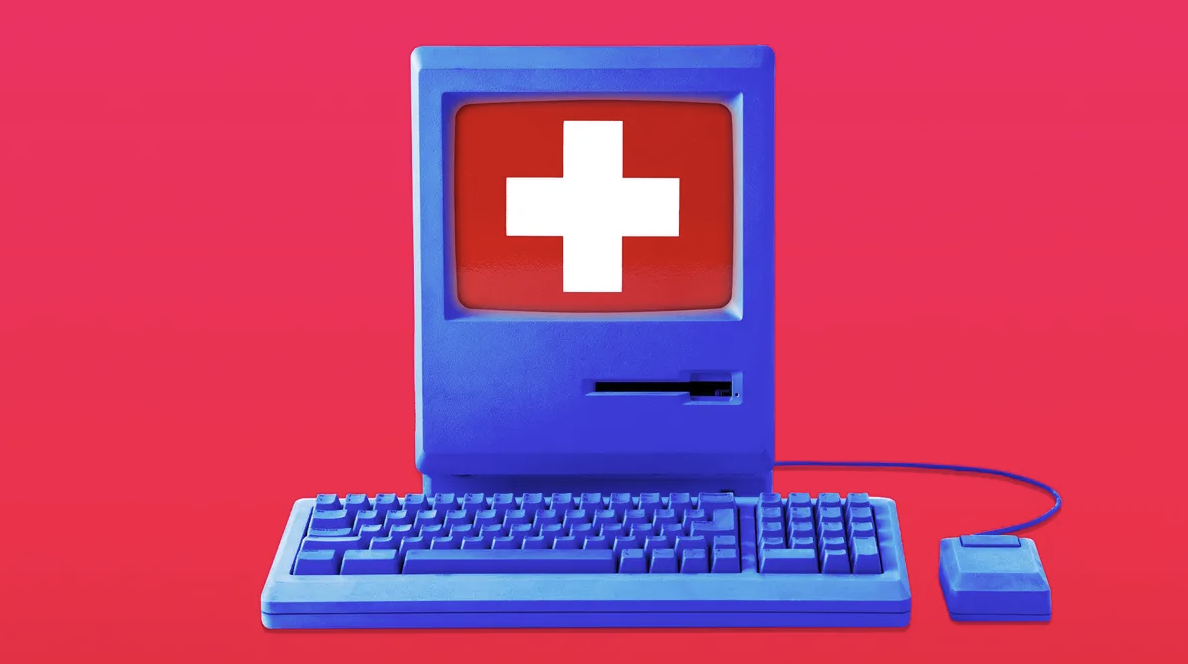4 internal comms challenges facing healthcare — and how to address them

Telehealth is here to stay, new medical technologies are always being added, and staffing shortages are resulting in the need to get new employees up and running quickly — shifting how corporate communicators in the healthcare sector reach their employees, patients, and stakeholders.
- Why it matters: Communicators have struggled to keep up with that shift, patching together solutions, working more demanding hours, and flooding inboxes to stay afloat.
Healthcare comms teams need to get ahead of those struggles by addressing the main culprits contributing to misalignment, inbox fatigue, and ineffective communications.
Challenge #1: Pressure to stick with the status quo
Most hospitals, clinics, and ambulatory services have been around for decades. Many are struggling to challenge the status quo — especially when administrators and stakeholders don’t see the value in overhauling a system that “still works,” even if it isn’t thriving.
So, communications continue to be shared as they always have been, which doesn’t speak to a modern workforce. They’re clunky, often inaccessible to the frontline, and far wordier than they need to be.
The solution:
- Audit your systems. Take a look at the communication systems you’re currently using. Where is it clunky or lacking? What tools do you need to better reach your stakeholders?
- Shorter, smarter updates. Between 60% to 80% of people will scan, not read, what you write, University of Maryland research found — especially frontline workers rushing between patients and appointments. Modernize your formatting and eliminate long text in favor of bullet points and other Smart Brevity styling to elevate your message.
- New communication channels. Modernize your approach with an internal communications platform that delivers the AI features you need to make your job easier and faster.
- Start tracking engagement. Many older communication systems don’t offer the data tracking comms teams need in order to show their ROI and learn their impact. Start tracking metrics like you would stocks to ensure you’re hitting your numbers.
Challenge #2: Gaps in reaching frontline workers
Nurses, home health aides, dental assistants, and EMTs are always on the move. And they don’t always have access to intranets or mobile apps — or the time to check them — meaning communications teams need to devote more time to delivering the same messages.
The solution:
- Be consistent. Send company-wide newsletters and team updates at the same day and time each week so deskless workers know exactly when and where they can find the information they seek.
- Support and train managers. Managers are a crucial part of reaching deskless employees. If managers aren’t informed, they cannot pass key updates along. Enable managers to seek out information and distill it down for teams and individuals.
Challenge #3: Imbalances in finding time for comms
For insurers, cases and claims come first. For pharmaceutical sales, they need to be present and attentive when meeting with providers. For providers, patients come first — needing charts updated, prescriptions refilled, and care delivered. Lives are depending on it. So reading HR emails, DEI updates, and benefits information get pushed to the side.
The solution:
- Send at the best times. Find the best time to send updates when folks can actually take a moment to read them. Our research shows the best time to send is Sunday between 3pm – 6pm, but with any non-traditional workforce, you’ll need to see when your unique employees are engaging most with your content.
- Combine repetitive sends. Once you see the volume that’s being sent, you can locate and combine repetitive sends to cut back on inbox overload.
Challenge #4: Data isn’t there
Many healthcare institutions lack a baseline to see how their comms are connecting. They can’t measure who is and isn’t opening their messages, and as a result, they can’t figure out who is missing out on valuable context and updates.
The solution:
- Upgrade to a new platform. Find an all-in-one solution that makes it easier to send updates while also delivering the metrics you need to see how folks are engaging on an individual level. Get a bird’s eye view to know if it’s physicians, nurses, office staff, or others who aren’t engaging so you can better target them in future updates.
- Get survey data. Don’t just monitor the numbers. Seek feedback from employees at levels of your healthcare org by running polls and surveys to see what they want to see more and less of.
- Create a central hub. Engage with a platform that shows you all your sends. That way, you can get an all encompassing view of what information is going out, how often it’s being sent, and where repetitive sends can be combined.
The bottom line: It’s only when you have the right tools in your toolbox that you can deliver top-notch communications to your teams when and where they need them. Start investing in the right platform now, and you’ll see a more aligned and informed workforce moving forward.
Read next: See how to modernize the communications at your healthcare institution





.webp)












.webp)

















